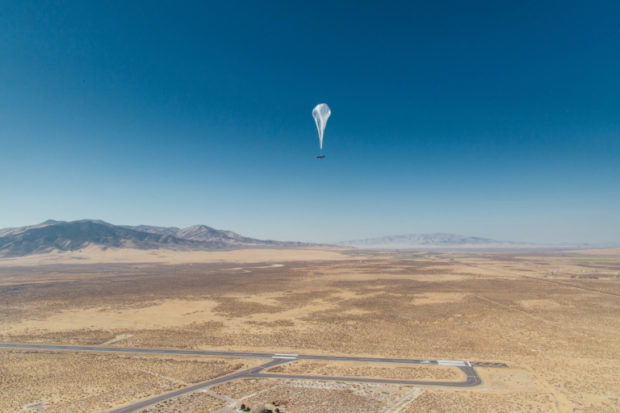Google 4G balloons are guided by AI

35 Loon balloons already offer quality internet connections to remote Kenyan areas. Image: courtesy of Loon via AFP Relaxnews
Alphabet’s 4G connection balloons have deployed new navigation systems using deep reinforcement-learning AI that is teaching itself to optimize navigation. The balloons can navigate the stratosphere in an autonomous and stable fashion, enhancing the internet coverage of these floating cell towers.
It is the first time that such technology, resulting from a collaboration between Loon and Google AI, Alphabet’s division specialized in artificial intelligence, is used in aerospace.
This artificial intelligence is based upon deep reinforcement-learning. This learning technique allows the balloons to learn from each new experience, even failures. This means that automated learning trains the balloons to make their own decisions depending on the weather conditions they have to face (winds, rainfall, etc.).
The main objective is to allow these floating cell towers to keep a constant altitude in the stratosphere in order to deliver the best possible service to local populations. This system aims at offering a more stable service to people who need to access this type of internet connection in remote areas.
The first Loon balloons were deployed in Kenya, where a commercial offer for internet access was launched last summer. These balloons work on solar energy and can fly at a 20,000-meter altitude. In theory, a balloon can cover 11,000 square kilometers. A 35-balloon fleet is currently in the stratosphere above Kenya, covering in total of 50,000 square kilometers in the center and the west of the country.
Loon’s stated goal is to make the internet accessible to all of the world’s population, including those who live in very remote areas. JB
RELATED STORIES:
WATCH: NASA releases time-lapse featuring 10 years of the sun
‘Street astronomers’ give pandemic-stricken Filipinos much-needed glimpses of outer space